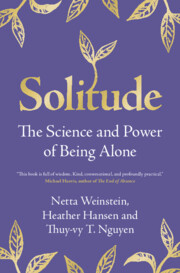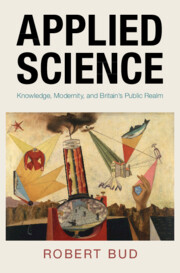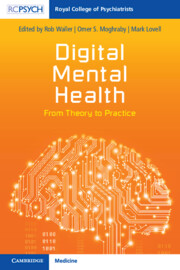482 results
Conceptualizing National Advisory Boards in primary care research: application to the Two in One HIV and COVID screening and testing model
-
- Journal:
- Primary Health Care Research & Development / Volume 25 / 2024
- Published online by Cambridge University Press:
- 09 May 2024, e26
-
- Article
-
- You have access
- Open access
- HTML
- Export citation
South Africa, 1994 + 30: A Conversation About History After Apartheid
-
- Journal:
- The Journal of African History , First View
- Published online by Cambridge University Press:
- 24 April 2024, pp. 1-18
-
- Article
-
- You have access
- Open access
- HTML
- Export citation
3 - Before We Climb This Mountain
- from Part I - The Problem
-
- Book:
- Toxic Stress
- Published online:
- 18 April 2024
- Print publication:
- 18 April 2024, pp 61-76
-
- Chapter
- Export citation
7 - Co-existence through Growth
- from Stage 3 - After World War Two
-
- Book:
- Applied Science
- Published online:
- 15 March 2024
- Print publication:
- 28 March 2024, pp 195-225
-
- Chapter
- Export citation
4 - The Dawn of the Twentieth Century
- from Stage 2 - Research in the Early Twentieth Century
-
- Book:
- Applied Science
- Published online:
- 15 March 2024
- Print publication:
- 28 March 2024, pp 93-117
-
- Chapter
- Export citation

Solitude
- The Science and Power of Being Alone
-
- Published online:
- 24 March 2024
- Print publication:
- 18 April 2024

Applied Science
- Knowledge, Modernity, and Britain's Public Realm
-
- Published online:
- 15 March 2024
- Print publication:
- 28 March 2024
36 - Ethical Inquiry in Educational Research
- from Part III - Emerging Ethical Pathways and Frameworks
-
-
- Book:
- The Cambridge Handbook of Ethics and Education
- Published online:
- 07 March 2024
- Print publication:
- 14 March 2024, pp 758-776
-
- Chapter
- Export citation
Developmental perspectives on the origins of psychotic disorders: The need for a transdiagnostic approach
-
- Journal:
- Development and Psychopathology , First View
- Published online by Cambridge University Press:
- 26 February 2024, pp. 1-11
-
- Article
- Export citation
3 - Ethical Challenges in Suicide Research
-
- Book:
- Practical Ethics in Suicide
- Published online:
- 15 February 2024
- Print publication:
- 22 February 2024, pp 37-66
-
- Chapter
- Export citation
Chapter 3 - Consultation-Liaison Psychiatry and Psychosomatics
-
-
- Book:
- Mental Health Research and Practice
- Published online:
- 01 February 2024
- Print publication:
- 08 February 2024, pp 27-48
-
- Chapter
- Export citation
Introduction
-
- Book:
- The Science of Virtue
- Published online:
- 11 January 2024
- Print publication:
- 01 February 2024, pp 1-22
-
- Chapter
- Export citation
Chapter 6 - Inquiry science for young children
- from Part 2 - How can I enhance children’s learning of science?
-
-
- Book:
- Science in Early Childhood
- Published online:
- 13 December 2023
- Print publication:
- 10 January 2024, pp 89-103
-
- Chapter
- Export citation
The Beat of my Heart
-
- Journal:
- Clays and Clay Minerals / Volume 64 / Issue 1 / February 2016
- Published online by Cambridge University Press:
- 01 January 2024, pp. 3-74
-
- Article
- Export citation
Forty-two years of computer-assisted language learning research: A scientometric study of hotspot research and trending issues
-
- Article
-
- You have access
- Open access
- HTML
- Export citation
Pilot test of Consensus Reporting Items for Studies in Primary care (CRISP)
-
- Journal:
- Primary Health Care Research & Development / Volume 25 / 2024
- Published online by Cambridge University Press:
- 19 December 2023, e1
-
- Article
-
- You have access
- Open access
- HTML
- Export citation
Chapter 4 - Big Data
-
-
- Book:
- Digital Mental Health
- Published online:
- 23 November 2023
- Print publication:
- 07 December 2023, pp 50-59
-
- Chapter
- Export citation

Digital Mental Health
- From Theory to Practice
-
- Published online:
- 23 November 2023
- Print publication:
- 07 December 2023
6 - The Multiversity
- from Part II - A History of the Future
-
- Book:
- City of Intellect
- Published online:
- 27 October 2023
- Print publication:
- 16 November 2023, pp 253-277
-
- Chapter
- Export citation
Chapter 10 - The Future
- from Part V - Overcoming Societal Discontent
-
- Book:
- The Fair Process Effect
- Published online:
- 26 October 2023
- Print publication:
- 09 November 2023, pp 118-130
-
- Chapter
- Export citation



